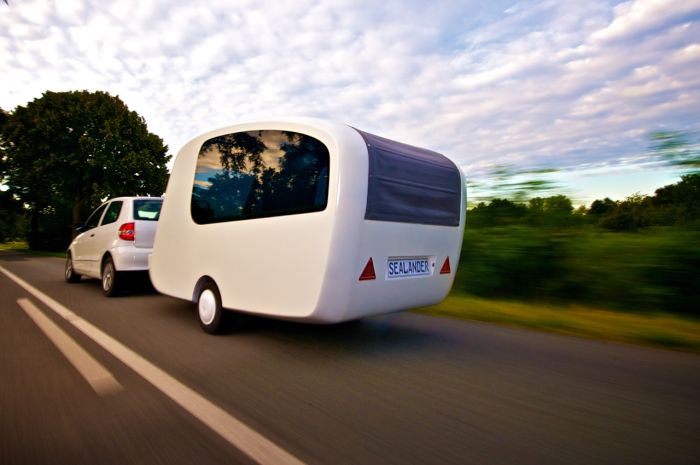|
|
Amphibious Trailer
|
Larger travel trailers are made with the seasonal or full-time user in mind. These generally range from 25 to 40 feet (7.6 to 12 m) long and contain all the comforts of a luxury condominium. Because they require a purpose built tow vehicle, highway tractor or large truck or SUV, these amenity-laden homes can reach 12,000 pounds (5,400 kg) or more. While trailers may weigh in even above that, most long-box pickups have a maximum tow-weight of 15,500 pounds (7,000 kg). Multiple televisions and air conditioners are common in units of this size. Slide-out rooms and screen porches add to livability. By law, travel trailers are limited to 400 square feet (37 m2) of living area, and many models offer exactly that plus any optional slide-outs.
With all of the disincentives inherent in municipal zoning bylaws and building codes to affordable, ecological (off-grid) and compact housing solutions, travel-trailers offer a possibility for those considering an ecological full-time home or seasonal cottage. Travel-trailers are often acceptable on flood-plains, areas outside of urban growth limits, etc. where regular buildings may not tread. One of the great virtues of a trailer park is its light infrastructure, low ecological footprint, minimal land disturbance, abundant permeable surfaces (for stormwater drainage) and ease of site restoration.
Some specialized brands of trailer, such as the hi-lo trailer, have an upper half (slightly larger than the lower half) that can be folded down over the lower half to a total height of about five feet for reduced wind resistance during travel; these otherwise contain everything other travel trailers have (except for a full-height closet).
An innovation in the travel trailer types is the "toy box" or "toy hauler". Half living area and half garage, these trailers allow 'toys' to be brought to the countryside. A folding rear ramp give access for motorcycles, ATVs, personal watercraft or racecars. A generator provides power for the equipment.
|
|









